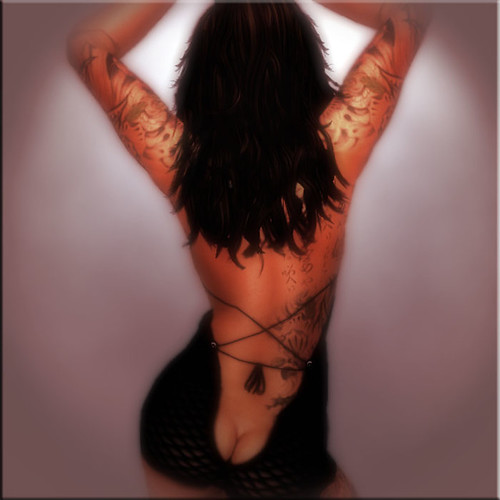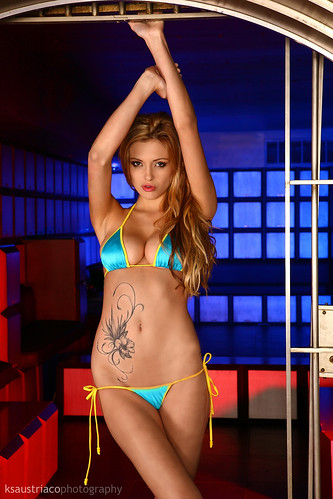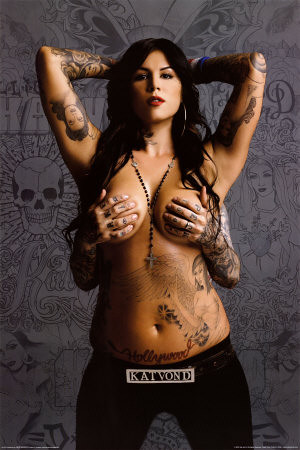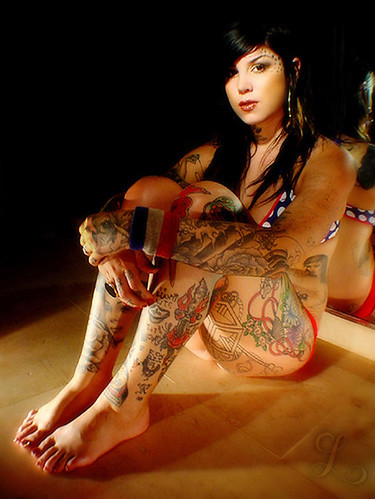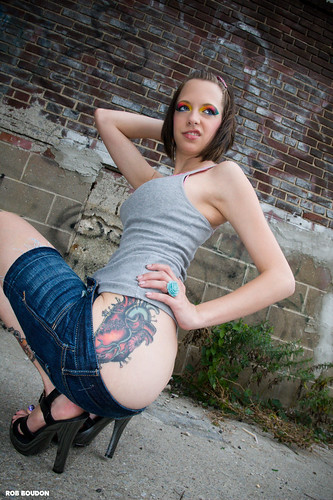For the designer, the story behind this striking show was even more intriguing, because Ms. von Furstenberg is about to exchange her design director of eight years — Nathan Jenden — for another man.
“It seems right to be working with a man — even though 97 percent of my company are women,” said Ms. von Furstenberg, who has appointed Yvan Mispelaere, formerly at Gucci.
The female factor is a powerful influence in this city where fashion can still be a feminist issue. The Kiki Smith art exhibit, which opened at the Brooklyn Museum last Friday, is filled with references to fashionable embellishment, as though women are still defined by dress and adornment.
On the runways, from Victoria Beckham’s sensual, slender dresses through Behnaz Sarafpour’s easy, tailored pieces, a single thread binds women designers: They all tend to design for themselves.
“Definitely, it’s personal,” chorused Alexa Adams and Flora Gill, the duo behind the label Ohne Titel. “But we like to think that what we do is part of a feminist discussion.”
Ms. von Furstenberg seemed surprised that her collection had not turned out quite as she intended, saying, “I wanted it supermasculine, and it looked so feminine — did I overcompensate?”
The answer might be “yes” in reference to hats perched in a froth of tulle, but the general mood of the show was of a strong woman flaunting her femininity with floral dresses — but also asserting her tougher side in pinstriped pants, tweedy blazers and granddad cardigans.
Mr. Jenden has made a good job of his work for the DVF label, prising the image away from the inevitable wrap dress (although a black silk jersey dress stroking the body was a stunner). Another silver dress with a space-age gleam caught well 21st-century glamour.
At Ohne Titel, the design duo described the look as “Victorian sportswear,” referring to netting for dresses and sports mesh for hosiery. The lacy effects were interspersed with geometric forms and toughened up with leather attenuated aprons and curvy felted vests. From tailoring to soft drapes, the show was a fresh, sporty take on the male/female thing.
The Victoria Beckham collection is a projection of its founder’s spirit. Talking about dresses cut loose like oversize sweaters, a new focus on draping and the sophisticated mixes of fabrics, like liquid and ribbed jersey, Ms. Beckham admitted that she was referring to herself. That message ran through each outfit as surely as zippers dissected the cloth.
This celebrity designer is determined to hold up a mirror to her character. And since that is still bold, but now more relaxed, so were the clothes. Colors like emerald green and cobalt blue also made a statement, as did prints of pixilated cartoons that made a powerful, modern pattern on an evening gown.
Gwen Stefani’s L.A.M.B. collection is another rare celebrity success. And there was no doubt that the collection was in her image, as the models wore the sporty separates with about as much makeup, fluffy blonde hair and tough but sexy boots (not to mention visible garter belts) as the inspirational singer.
“I love the process — and I put a lot of time into this,” said Ms. Stefani. “I see the same creative struggle and pressure to get there as in music, but fashion does not have the same level of emotional stress.”
Donna Karan might say the same thing about her DKNY collection, compared with the main line. The clothes looked like what they are — cheery pieces for young women who want a camel peacoat or a plaid jacket, to be teamed with a short skirt and a gilded scarf, sparkling with crystal embroidery or lamé stripes. Flower patterns, as if taken from Japanese prints, contrasted with geometric patterns, creating a collection aimed more at the new generation of the grandchildren she embraced on the runway, rather than on Ms. Karan’s personal aesthetic.
“These are clothes I really want to wear,” said Behnaz Sarafpour, explaining how in her ninth year of working, the collection had come full circle to herself. The result was a subtle play on textures and on masculine and feminine clothes, making sportswear tactile by contrasting a charmeuse blouse with tweed trousers, a blazer with pleated pants or mohair with stretch wool.
Catherine Malandrino was in a wild and woolly world where a goat’s-hair chair, constructed from animal horns, set the tone for furry, cocooning coats and distressed leather that was on the weird side of wearable.
The high clerical collars that caressed the necks at Alberta Ferretti’s Philosophy line were just one way that the Italian designer tenderized tailoring. There was a stronger-than-usual outer shell — a protective shield — coming between the lingerie-light underthings and the firm coats. Long skirts gave a monklike quality, although for every long military coat or belted jacket, there was a wisp of filmy fabric on view. Boots laced at the back were another gesture of hidden sensuality.
Ms. Ferretti assessed the female vision, saying: “Strong, romantic and delicate — a
real woman.”
Get up to 70% off at Piperlime’s final sale of the season. Get free shipping too! Shop Now.

